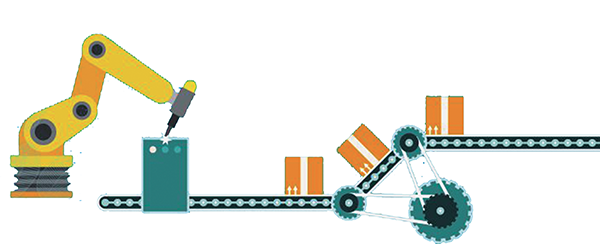The Goods and Services Tax (GST), which rolled out on July 1, 2017, is likely to have a favourable outcome for the economy. The consumers are expected to gain as the government has kept a large number of items under the 18% tax slab.
Dr. Arun Singh, Lead Economist, Dun & Bradstreet India, while commenting on the impact of GST said, “While there are increased expectations in the market for a policy rate cut due to moderation in both the Wholesale Price Index (WPI) and the Consumer Price Index (CPI), inflation along with weak industrial production, the future policy stance will be contingent on the pace of increase in demand in the economy. It would create uncertainty in the global commodity prices, increase in recent MSP in pulses, oil seeds and cotton. However, since the price of goods and services is likely to be volatile as GST sets in and the base effect of the headline inflation numbers wanes out post-July 2017, we expect the policy rates to remain unaltered in the near term.”
 The manufacturing sector
The manufacturing sector
Auto: The manufacturing sector would turn out to be a clear winner with the imposition of the GST. This includes the automobile manufacturers. The current tax system which levied several taxes on this sector like excise, VAT, sales tax, road tax, motor vehicle tax, registration duty on car and bikes will be subsumed by the single GST. Earlier, the average combined rate for automobiles was 26.5% to 44%, which is higher than the expected rates of 18% and 28% under GST. Therefore, this is likely to reduce the burden of tax on the end consumer under GST.
Small cars with a minimum cess of 1% have been charged over and above the GST rate of 28%. Bikes with engines of more than 350CC like would be charged GST at the rate of 28% and an additional 3% cess would be levied.
Steel: The steel industry is likely to benefit from the new GST which is at 18%. With a substantial slash in transport costs due to unified and standard tax rate under GST and cutting off on major excise and VAT, this move will aid steel companies reeling under large debts while keeping steel prices stable.
Commenting on this, Mitesh Prajapati, Director of Sameer Steel Division Of Ramanlal Prajapati and Sons Steel India Pvt. Ltd., said, “We support the government’s initiative, but as small business owners, we are intimidated with technological dependence for abiding by the policy. A major setback for businesses in smaller towns could be to install the computer and the internet and deploying an added staff to manage online registrations for e-way bill and uploading of invoices for availing ITC. Again, conditions laid down for availing GST input on tax credit seems stringent on its approach. We hope we will sail through the initial difficulties and wish that the regime will fulfill its objective.”
Nikunj Turakhia, President of Steel Users Federation of India (SUFI), said, “GST is one of the biggest post-independence reforms in India. It will change the way businesses are conducted. The long term advantages are tremendous as India moves towards one nation, one market, and one tax. Of course, there are apprehensions and confusion related to the complex nature of Indian business but long term benefits are surely visible.”
Textile: Although prices of garments over `1,000 will rise marginally, the council announced a tax of 5% for yarn and cotton and ready-made garments below the `1,000 mark. For garments above `1,000, the tax rate has been fixed at 12%. This will however make all products proportionately costlier. Some states had levied value added tax on cotton yarn and fabric at 2-4%. Overall, a 5% GST levy is higher than the existing levies on cotton yarn and fabric. Silk and jute have been kept under “nil” category under GST. Man-made or synthetic fibre yarn will attract 18% GST.
Indian Finance Minister Arun Jaitley, while announcing these rates, had clarified that textile manufacturers would not be given credit outflow, which implies an input credit above the prescribed limit would not be granted to textiles manufacturers. With this, readymade garments would become costlier. Had input credit been granted, garment manufacturers would have got a breather in terms of taxes on raw materials. However, the GST rate for textiles will eliminate the cascading effect of duty/taxes which will reduce the costs and improve the competitiveness of the textiles exports.
Leather: A 5% GST rate will be applicable on raw materials like raw hides, skins, tanned or crust hides and skins which are not processed or prepared further. A 12% GST rate is levied on all leather goods, processed and prepared after tanning or crusting.
Add new comment